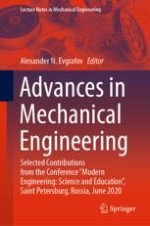This book draws together the most interesting recent results to emerge in mechanical engineering in Russia, providing a fascinating overview of the state of the art in the field in that country which will be of interest to a wide readership. A broad range of topics and issues in modern engineering are discussed, including dynamics of machines, materials engineering, structural strength, transport technologies, machinery quality and innovations. The book comprises selected papers presented at the 9th conference "Modern Engineering: Science and Education", held at the Peter the Great Saint Petersburg Polytechnic University in June 2020 with the support of the Russian Engineering Union. The authors are experts in various fields of engineering, and all of the papers have been carefully reviewed. The book will be of interest to mechanical engineers, lecturers in engineering disciplines and engineering graduates.
